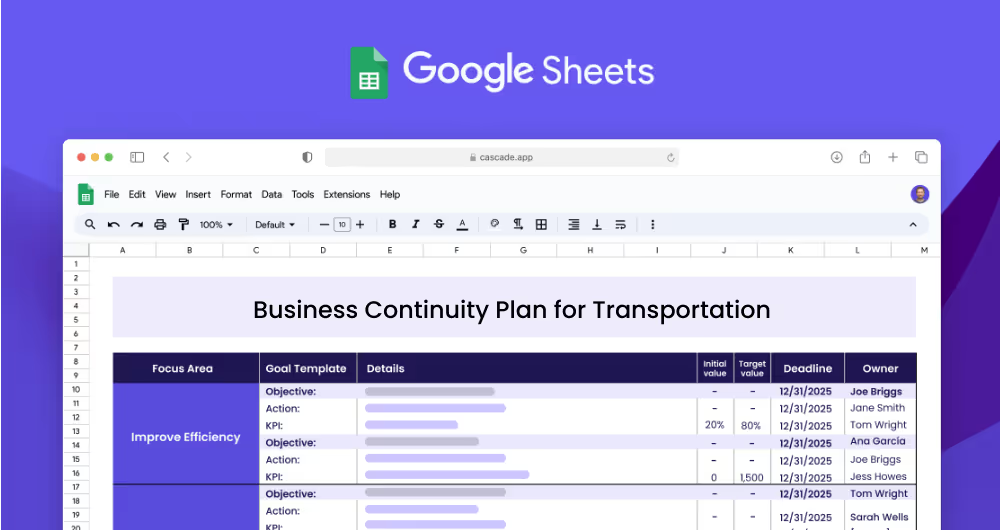A business continuity plan for transportation outlines the steps necessary to ensure the continuity of transportation services, supply chains, and cargo operations during times of emergency or disruption. It is a strategy designed to prepare for potential risks, minimize their impact, and ensure the business can continue operations in the event of an unexpected incident. A business continuity plan helps ensure that transportation operations will remain consistent and secure during times of crisis.
Each focus area has its own objectives, projects, and KPIs to ensure that the strategy is comprehensive and effective.
This business continuity plan for transportation is designed for transportation companies, logistics providers, and freight operators. It provides the framework and the necessary steps for creating a comprehensive business continuity plan, helping organizations prepare for any disruptions, secure their operations, and ensure the safety of their customers.
When creating a business continuity plan for transportation, it is important to define clear focus areas. These focus areas should be based on the specific needs of the organization and the risks associated with their industry. For example, a transportation company may focus on ensuring business continuity, maintaining supply chain continuity, and protecting business assets.
Objectives are the goals that need to be achieved in order to achieve the focus areas. For example, an objective under the focus area of ensuring business continuity may be to develop a contingency plan.
KPIs are measurable targets used to track progress towards objectives. For example, if the objective is to reduce response time for unexpected events, a KPI could be to reduce response time from 8 hours to 5 hours. KPIs should be tracked regularly to ensure the objectives are being met.
Projects, also known as actions, are the steps necessary to achieve the KPIs. For example, if the KPI is to reduce response time from 8 hours to 5 hours, an action may be to establish an emergency response team. Projects should be measurable and have clear deadlines.
If you're looking to excel beyond mere planning and truly execute your business continuity strategies, Cascade Strategy Execution Software is the ideal accelerator. By transcending traditional spreadsheets, Cascade offers a centralized, scalable, and secure platform that integrates strategic planning with execution. The software provides real-time updates, visual dashboards for enhanced visibility, and automated reporting that vastly outperforms outdated methods. Sign-up for free or book a demo and propel your transportation strategy forward with one of our strategy experts today!


